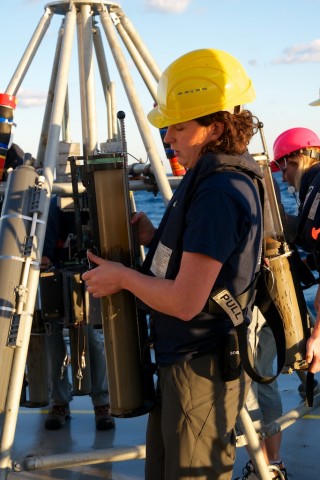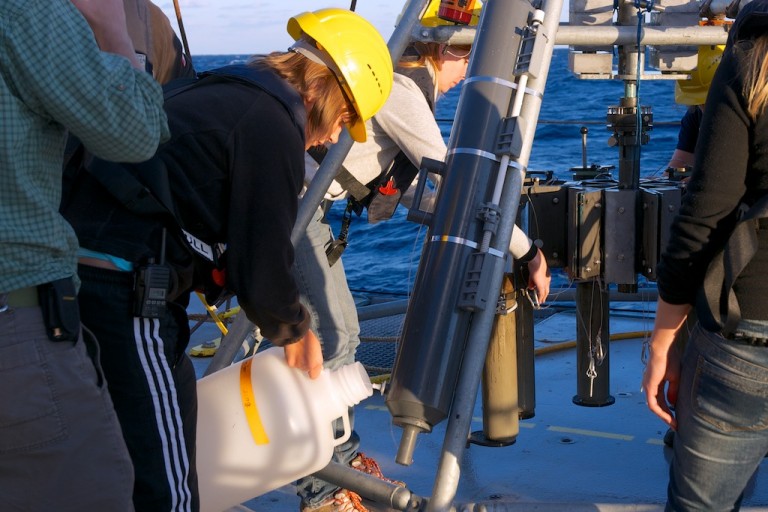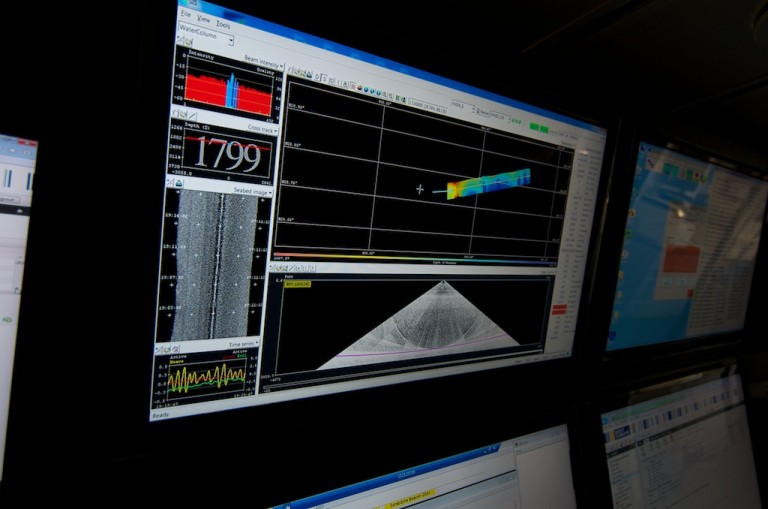Our first night at sea was spent offshore about 140 kilometers (88 nautical miles) south of Pascagoula mapping the seafloor. R/V Falkor has a state-of-the-art multibeam echosounder that is designed to map almost all of the ocean floors excepting the deep trenches (up to 7 kilometers or nearly 4.5 miles). During mapping, the ship transits along a designated grid following a “lawn mowing” pattern for a period of several hours, an activity that is often conducted after sunset when ROV operations and instrument deployments have completed.

The R/V Falkor shakedown cruises have provided opportunities to test the accuracy of the mapping system and to give the scientists important new data for their studies. For example, the mapping completed in the wee hours this morning will help our science team determine specifically where the ROV should dive for sample collection.
Most of the first full day at sea was allocated to calibrating and testing the equipment that will be used tomorrow. One of the main tasks involved stretching the cable or “wire” that is used to deploy instruments from the A-frame on the aft deck. The wire, newly installed on the ship, was attached to a heavy weight and lowered into the sea down to nearly 2,000 meters (nearly one mile) to uncoil the natural twists and turns. The wire was then retracted mechanically onto the ship and coiled back onto the drum to be ready for the next deployment.
All of the equipment tests went smoothly and allowed the scientists to begin sampling from this site. Two deployments of the multicore yielded nearly 16 cores of sediment for the science team, primarily for graduate student Maggie Esch who is studying the effects of resuspension on nutrient cycles. The scientists analzying the sediment samples stayed up well past midnight to process the samples and begin their experiments.

Tomorrow the team is excited for the first ROV dive that will occur at site VK826, an area with aggregations of deep-sea corals. As night fell after a long day of testing, the R/V Falkor once again began a “lawn mowing” pattern to map the seafloor in this dynamic region.

